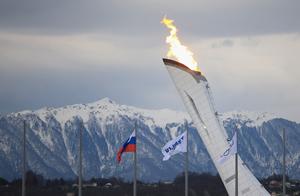
Pondering the environmental impact and future of the costly Winter Olympics.
By John Fry
The organization of the recent Sochi Olympics was superb, and it’s no historical exaggeration to say that the staging of the competitions may have been the best of any Winter Games. When it comes to organizing mass events, there’s something to be said for autocracies, or $50-billion kleptocracies like Vladimir Putin’s Russia.
ISHA’s own Jean-Claude Killy, the IOC chief coordinator for the 2014 Winter Games, told the Wall Street Journal that a key to addressing problems was his access to Putin. “We always had the capacity to go to the top man,” said Killy, who first met Putin in Guatemala City seven years ago. “When you become friends with this guy and ask for something and you see it within two hours, that’s impressive.”
“They did a helluva job!” Roger McCarthy told me. McCarthy should know. The re-designer of Breckenridge and Tremblant, he and Ecosign’s Paul Matthews of Whistler, B.C., planned the trails and base for the alpine competitions at Rosa Khutor outside Sochi. More manmade terrain features were built for the 2014 snow competitions, McCarthy estimates, than at all previous Winter Olympics.
If the Russians didn’t achieve success all by themselves, they were smart enough, and had a fat enough wallet, to import experts from around the world to prepare the venues.
While western journalists and politicians criticized the IOC for endorsing a political system lacking civil rights, former Crazy Canuck downhiller Steve Podborski, who headed his country’s Sochi mission, reflected better what was in the minds of the athletes and coaches. “It’s their country,” said Podborski. “If it’s something you don’t agree with, well then the Olympics is really not the place to do it. You’re going to the Olympics to compete.”
“Have the courage to address your disagreements in a peaceful political dialogue, not on the backs of the athletes,” said IOC president Thomas Bach, in reminding critics of the organization’s political agnosticism.
Sochi attracted participation by 88 nations, a striking contrast to the 1980 Moscow Summer Games that were boycotted by 60 nations. And even if they cost an excessive, corruption-padded $50 billion, Russia now has four world-class ski areas, 50,000 hotel rooms, new docks, international airport, and a railway and road between the sea and the gorgeous Caucasus Mountains. Sochi, a traditional summer vacation magnet for Russians, has been dramatically upgraded.
Mixed Media
If you were sufficiently patient to wait through the incessant bombardment of commercials, Christin Cooper and Steve Porino, aided by excellent graphic overlays, deftly revealed to viewers the reasons for victory and loss in the alpine races. In the New York Times, Bill Pennington wrote some of the best technical descriptions of alpine ski racing ever published in a general newspaper.
The Times also prodded its readers to worry about the future of the Winter Games. In an article “The End of Snow,” Powder Magazine editor and writer Porter Fox deplored the carbon emission-caused global warming likely to lessen the number of potential host cities that are within an hour of the mountain elevations and temperatures needed for ski and snowboard competition.
At several points, Fox struggled with facts. He stated that most American ski areas are struggling financially, when more today are profitable than at any time. Skier and snowboarder visits to U.S. resorts in the period 2003-13 increased by almost 10 percent over the 52-million annual average of the period 1993-2003.
Fox cited statistics that “the winter sports industry contributes $66 billion annually to the U.S. economy, and supports more than 960,000 jobs.” The numbers encompass just about all the infrastructure of tourism—lodging, retail, travel, food service. Tragic as will be the loss to the ski industry from global warming, a warmer climate may increase, not destroy, jobs in tourism.
An Environmental Conundrum
“Of the 19 cities that have hosted the Winter Olympics,” Fox reported, “as few as ten may be cold enough by midcentury to host them.” None of the ten, coincidentally, is presently on the ever-fluctuating list of cities that say they want to host the 2022 Games. One candidate, Almaty, is in Kazakhstan, a country ruled by a brutal dictator. Another is in strife-torn Ukraine. Take your pick.
Western nations have become averse. The German and Swiss publics, and now the Swedes and French at Annecy, don’t want to shoulder the huge expense and
environmental impacts. The
burden is heavy: Winter Olympic medal competitions, now at almost a hundred, have doubled in the past 25 years, accompanied by a huge increase in hotel room demand.
Happy to say, Pyeongchang, the South Korean site of the 2018 Winter Olympics, will put the Games in the setting of a ski resort, with competitions scattered around four locations. Korea is cold in winter. Vast amounts of chemicals shouldn’t be needed to salvage the ski and snowboard events, as happened at the mountain cluster of Rosa Khutor, Laura, and Krasnaya Polyana. Sochi mirrored the IOC choice of another sea-level city, Vancouver, for the 2010 Winter Games, where fog, rain and predictably warm weather on Cypress Mountain and the base of Whistler plagued ski and snowboard competitions.
The problem has been the IOC’s pursuit of bigger and bigger Games hyped with bigger and bigger money. Ever since Grenoble in 1968, IOC-chosen host cities have spent billions on buildings, highways and facilities, often with meager after-use. The demands of a commercially successful, massive Games have contributed to the global warming that now threatens their future.
John Fry is president of the International Skiing History Association. To learn more, go http://johnfry.net.
